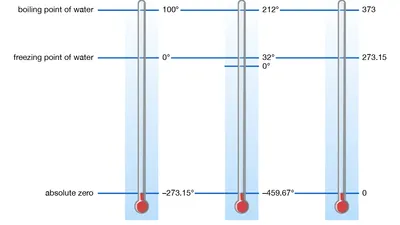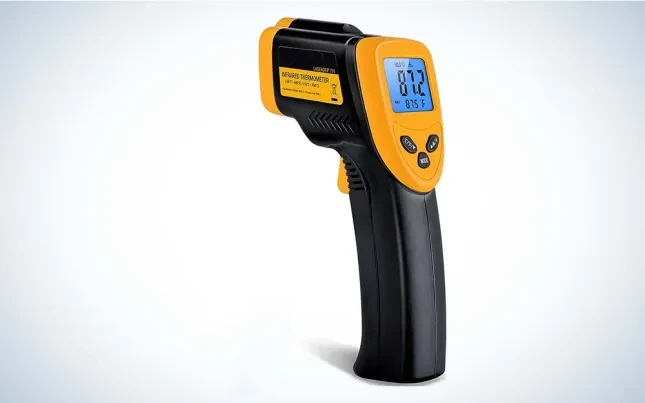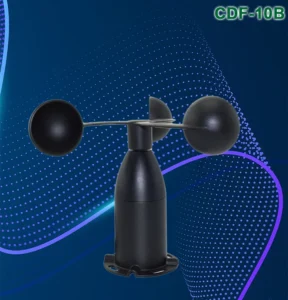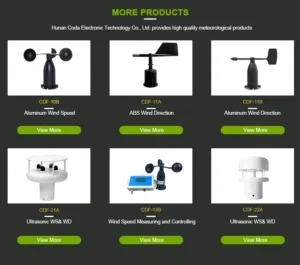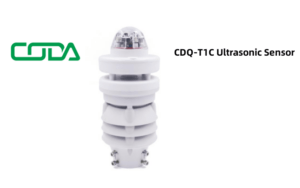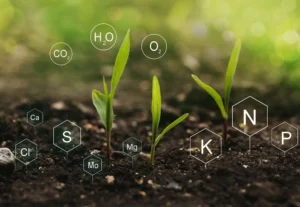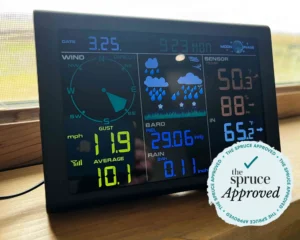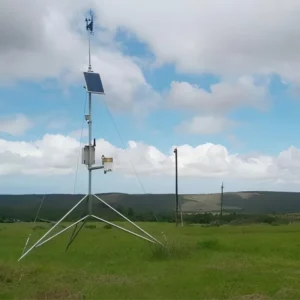Weather Thermometers: Their Mechanics and Importance
Weather thermometers are important tools in our daily lives. They give us key information about the changing temperature around us. More than just tools to check the temperature, they help us make better choices. They guide us in picking the right clothes, planning outdoor activities, and caring for our plants and gardens.
This guide explains how weather thermometers work. It covers the different types, their uses, and why they are important today.
How Weather Thermometers Work
Thermometers work by measuring temperature. They rely on how some materials expand or shrink when temperatures change. Early thermometers followed this basic principle, using air or liquid expansion inside a glass tube to display temperature shifts.
Modern versions build on this foundation. They offer different options like digital, analog, and infrared models. Designers create each model for specific needs.
The most traditional design features a liquid-filled glass tube commonly using mercury or dyed alcohol. When temperatures rise, the liquid expands and moves up the tube. A scale along the tube shows the temperature. Though simple, this design remains effective and has inspired countless innovations to improve accuracy and usability over time.
Digital thermometers employ electronic sensors to measure temperature. They offer quick readings displayed on easy-to-read digital screens.
Many models have useful features. They include backlighting for low light conditions. They also have memory to store past readings. Additionally, there is a switch to change between Celsius and Fahrenheit. Often waterproof and built for durability, digital thermometers excel in outdoor or rigorous environments.
Infrared thermometers add another layer of sophistication by measuring temperature without physical contact. They work by detecting infrared energy emitted by objects, allowing for temperature assessment even from a distance. These devices are very helpful when direct measurement is not safe or possible. This includes tracking moving objects or extreme heat sources.
Each type of thermometer plays a vital role in weather observation and influences how we react to atmospheric conditions. We can measure environmental changes in different ways. We can use a simple liquid thermometer or precise electronic tools. This helps us adapt to those changes.
Types of Weather Thermometers
The versatility of weather thermometers lies in the wide array of designs, each suited for particular applications. Classic liquid thermometers filled with mercury or alcohol remain popular due to their clear and straightforward operation, requiring no electricity or calibration. People often use them in homes and schools for their simplicity and reliability.
In contrast, digital thermometers have gained significant traction as modern, user-friendly alternatives. With a simple press of a button, they give accurate readings. They often have extra features, like saving past data or changing temperature scales. Their accuracy and convenience make them a popular choice for both amateur weather fans and professional meteorologists.
Bimetallic thermometers provide a useful solution. They bond two metals together. These metals expand at different rates when the temperature changes. This creates a bending motion that translates into temperature readings via a calibrated dial. People commonly use these durable and straightforward items in applications like cooking or industrial environments where robustness is key.
For extreme conditions or specialized industrial use, users prefer options like thermocouples and resistance temperature detectors (RTDs). By using electrical resistance to measure changes in temperature, these devices can withstand harsh environments while maintaining precision.
Smart technology has created new weather stations. These stations combine thermometers with sensors. They can measure humidity, wind speed, barometric pressure, and more. These all-in-one systems often connect to smartphones or home assistants. They give users a complete view of current conditions and future forecasts right at their fingertips.
Why Weather Thermometers Matter
Weather thermometers are far more than technical tools—they’re part of our daily routines and safety measures. Whether you’re gauging temperatures to determine outdoor visibility or assessing conditions before venturing into severe weather zones, thermometers provide clarity in decision-making. Their evolving designs and capabilities not only make atmospheric data accessible but also empower us to navigate our environments more effectively. In a time when accuracy is very important, weather thermometers are essential. They help us understand nature’s patterns and changes.
Selecting the appropriate thermometer greatly depends on its intended purpose, whether for home gardening, professional meteorology, or culinary applications. Knowing the strengths and weaknesses of different types can help people choose a thermometer that fits their needs.
How Weather Thermometers Shape Everyday Decisions
Weather thermometers greatly affect our daily routines. They help us decide what to wear, what to do, and when to do it, especially for outdoor activities. For instance, many people check the temperature in the morning to decide how to dress for the day. A cold reading might make someone choose a heavy coat and scarf. A warm, nice temperature may lead to lighter, cooler clothes.
Beyond wardrobe decisions, thermometers play an essential role in outdoor activity planning. Families or individuals often check the temperature to see if it’s good for a picnic, a hike, or a day at the beach. By watching weekly temperature patterns, people can choose the best days for their plans. This helps ensure comfort and increases enjoyment.
Farmers and gardeners also heavily depend on thermometers to guide their work. Tracking temperature trends is important for planting or harvesting crops. Many plants need certain temperature ranges to grow well. Farmers use this information to plan when to sow or harvest for the best yield. Gardeners often check thermometers to know when to start seeds indoors or move them outside.
Indoors, thermometers help control the climate. They allow homeowners to adjust heating, ventilation, and cooling systems for comfort and energy savings. During extreme weather events, it is important to monitor outdoor temperatures. This helps keep people safe. It can prevent frozen pipes and protect delicate plants from frost damage.
Although often taken for granted, temperature readings subtly yet profoundly impact our routines. Weather thermometers are important tools. They help us decide what to wear and plan outdoor activities. They also help with growing crops and keeping our homes comfortable. These tools improve our decision-making and daily life.
The Significance of Precise Temperature Readings
Accurate temperature measurements are not only beneficial but also essential across multiple dimensions, from personal safety to global scientific endeavors. For instance, extreme temperatures can pose serious health risks. Heatwaves may lead to heat exhaustion or heatstroke, especially among vulnerable groups like the elderly or young children. Knowing the exact temperatures helps people take precautions. They can stay in the shade or limit exercise during the hottest times.
In agriculture, accurate thermometers can determine success or failure in crop production. Farmers depend on reliable temperature data to guide irrigation schedules, fertilization efforts, and pest management strategies. Sudden changes in temperature can greatly impact crop quality and yield. This, in turn, affects food supply chains and prices at local markets.
Meteorologists and climate experts use accurate temperature readings. They analyze weather systems, track climate trends, and give early warnings for severe weather events. This data helps create predictive models that are important for emergency planning. This ensures communities are better ready for natural disasters.
Similarly, accuracy in temperature readings is indispensable in industries like aviation. Reliable data helps keep flights safe. It affects choices about flight routes, delays, and emergency actions during bad weather. Maintenance schedules for aircraft also depend on detailed environmental data collected from sophisticated thermometers.
Given its wide-reaching implications—from personal well-being to industrial efficiency—ensuring thermometer accuracy is vital. Regular device calibration and awareness of potential errors are key to maintaining dependable readings in high-stakes situations. High-quality weather instruments thus become not just practical tools but essential assets across all areas of application.
Future Innovations in Thermometer Technology
With the continuous advancement of technology, temperature measurement is undergoing exciting transformations. The next generation of weather thermometers will deliver improved features and functionalities, pushing the boundaries of accuracy and usability. A key trend is the incorporation of artificial intelligence (AI) and machine learning algorithms. These smart technologies let thermometers measure temperatures. They can also analyze patterns and predict future conditions more accurately. Such predictive capabilities could prove invaluable for everyday users planning their activities or professionals managing climate-sensitive industries like agriculture.
Another significant development is the rise of sophisticated, networked weather stations. These systems collect real-time data on temperature, humidity, wind speed, and air pressure, offering a comprehensive environmental overview. This integrated approach empowers both individuals and organizations to make informed decisions. Home automation systems can use live weather data. This helps adjust heating and cooling settings. It boosts energy efficiency and lowers costs.
The world of wearable technology also promises to reshape how we interact with temperature data. In the near future, manufacturers might embed thermometers in clothing or wearable accessories. Outdoor lovers and athletes can benefit from real-time temperature readings on their smartwatches. This helps them adjust to changing conditions right away.
Sustainability is another driving force behind thermometer innovation. As environmental consciousness grows, people pay more attention to designing energy-efficient devices powered by renewable energy sources. These advancements help protect the environment. They also make sure our tools follow sustainable practices.
In line with these developments, manufacturers will make weather thermometers more reliable, user-friendly, and interconnected than ever before. Their evolving capabilities will help society respond to weather phenomena with greater agility while promoting environmental stewardship.
Thermometers are important in our daily lives. They help us decide what to wear and how to manage big tasks like farming and energy use. The availability of precise measurements impacts personal safety, climate study, and everything in between.
As technology keeps changing this field, thermometers will become more important. They will improve how we understand and interact with our world.
Using new thermometer technology can improve our lives in many ways. It helps us personally, professionally, and in science. This change will enhance how we connect with our environment.

